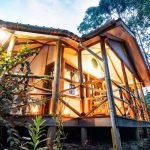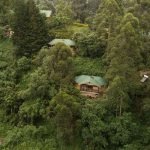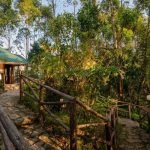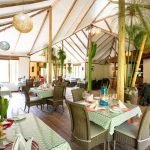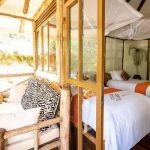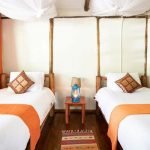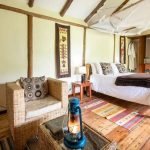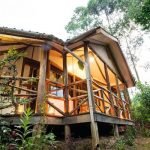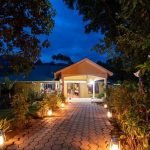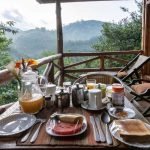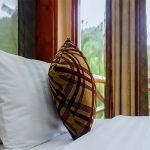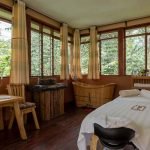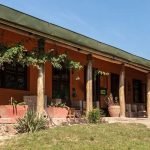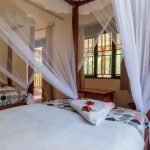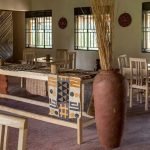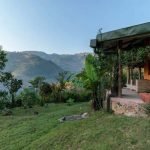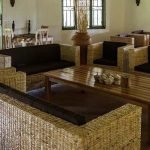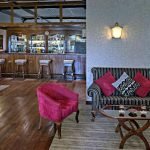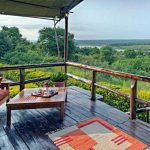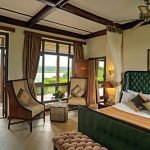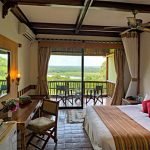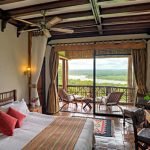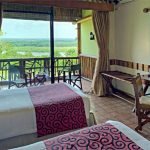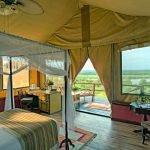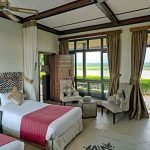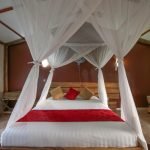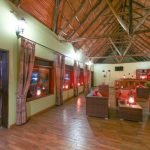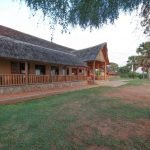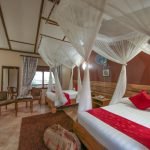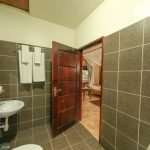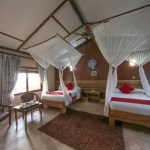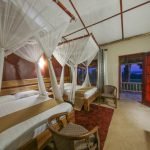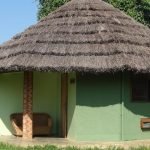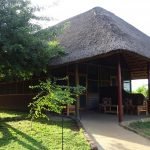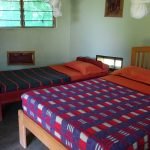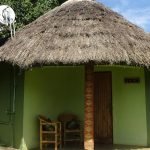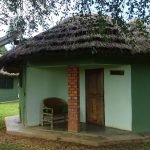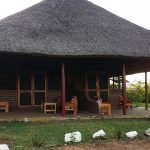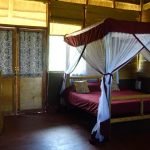A visit to Karamoja is a must for anyone desiring to see an undefiled and wild African culture and outback. It is a great holiday destination for anyone looking to get away from the much trodden tourist places of Uganda, with the desire for something untamed and off the beaten path.
MOROTO
The first stop on your Karamoja tour has got to be Moroto. Moroto is an 8 hour drive from Kampala, and you can get there using the eastern route that goes through the towns of Jinja, Iganga, Mbale, and Soroti. The road is all paved with a constant stream of activity, keeping your eyes occupied for most of the drive. Jinja (Java house) and Mbale (Endiro coffee) are ideal rest stops, with access to a clean bathroom and a place to get food or a good cup of coffee. Another alternative for food is trying something local.
There is a popular bus stop just 2 hours out of Kampala called Namawojjolo, renowned for their perfectly roasted and salted chicken on a stick. I highly recommend giving it a try, and if you do, then get out of the vehicle and walk down to the road side stalls and buy the freshest chicken off the grill. Avoid the chicken hawked on the street and displayed through the car windows, it may be contaminated.

Be sure to fill up the gas tank in Soroti before proceeding to Moroto, as there is no other gas station in between the two towns that are 106 miles apart. If you prefer not to drive, then Moroto also has an airstrip with a couple of aircrafts in Entebbe offering shuttle flights to the town.
Moroto is a small quiet town with very little activity, located in the valley right below the Mt.Moroto range. The town is a great base to experience most of what Karamoja region has to offer. Karamoja as a region offers very few comforts of modern life however, in Moroto you can find decent accommodation (Karamoja Safari Camp) with reliable power supply, hot showers, flush toilets and access to the internet. The town itself is safe, and you can walk around town without any concern for your security. A couple of the hotels offer western cuisine, although the menus are limited to a few meal options.
The top things to see in Moroto are the local tribes. These are among a few of the tribes in Uganda, and in East Africa that have remained largely isolated and undefiled by modern civilization, providing a great opportunity to learn and be exposed to a different way of life. The tribes still live off their land and follow the rules and lifestyle of their ancestors.
The dominant tribe are the Karamojong, who are a warrior tribe of nomadic pastoralists and live in villages known as manyattas.
For a satisfactory visit, you need a guide or tour operator to show you around, since you can’t visit any of the tribal communities or hike the trails on your own. There are no marked trails with public access or visitor offices in the villages.
In Karamoja, everything is privately arranged. I recommend using Kara Tunga, who are locally owned and based in Moroto. They have good relations with the tribal communities, and have worked with them to create a series of trails and activities in Karamoja. They also have a comfortable tented-safari camp that works well as a base for a stay in Karamoja. Here are my recommendations of the top things to do with Kara Tunga:
Take a 3 hour hike of Mount Moroto.
Mount Moroto is the highest mountain in the region, towering to the height of 3080m above sea level. A hike to the summit of the mountain can be done in a day. This hike mainly covers the foot hills of the mountain. It’s a relatively easy hike, perfect for inexperienced hikers and families. Along the hike, you meet the Tepeth, a small tribe that lives on the slopes the mountain and are even more indigenous than the Karamojong.
The trails pass through some of their homesteads, which offers an opportunity to observe an engage them as they go on about their daily chores. The hike also offers spectacular panoramic views of the Moroto mountain range and the semi-arid plains of Karamoja below.
The scenery up the mountain is reminiscent of the views of the great rift valley from the escarpments of Naivasha in Kenya. Along the trails, you are treated to various sights and sounds of bird life, some of which are only indigenous to Karamoja. This is a great hike to do with kids. It’s relatively easy, fun and offers lots of learning opportunities. If you are a more experienced hiker, you may fancy hiking all the way to the peak, then camp at the top of the mountain for the night, and descend the mountain the following day.
Visit to the Karamojong Village
The nearest Karamojong village (manyatta), is approximately a 30 mins drive out of town. The visit is a combination of sightseeing and participation. Everything about the Karamojong is fascinating; the dress code, their food, the design of the manyattas, the elders, the family structure, and the rituals. These all provide a captivating insight into their way of life. Each village is fenced using dry twigs and branches, intertwined together to form a tough exterior wall for protection from attacks from neighboring tribes.
On arrival, the guide introduces you to the elders, and once permission is granted, he proceeds to give you a tour of the village. The tour includes meeting a Karamojong family, learning how each manyatta is structured, how the huts are built, the critical role of the women, and even learn how their local brew is made.
Evening in the Kraal with the Nomads
Extend your village visit and join the cattle herders in the evening. Cattle keeping is a very important part of Karamojong culture. In the old days, part of a Karamojong warriors ‘duty was to protect their cattle, and if necessary raid their neighboring tribes for cattle. As part of the tour, help the passionate herders bring the cows to the Kraal, learn how to milk a cow and witness traditions such as spearing a cow for blood to drink.
If you have more time to spare, then check out the Kara Tunga Tours website for more activities.
KIDEPO
The second stop is Kidepo Valley National Park. If you have more than a weekend to spare, then a safari to see the attractions of Kidepo Valley National Park is a great addition to your itinerary. It is a 6 hours’ drive north of Moroto, and the road is not paved and can be difficult to maneuver, especially in the rainy season. A 4×4 vehicle is essential for this part of the trip.
The road goes through Kotido and Kaabong towns, which are ideal rest stops for fuel and bathroom breaks. The drive to Kidepo really feels like a drive through the wilderness outback. You can also access Kidepo directly from Kampala through the northern route that goes through the cities of Gulu and Kitgum. This route is better suited for those seeking to visit Kidepo alone.

Why visit Kidepo?
Kidepo may not be as renown, or boast of large populations of wildlife as other East African safari destinations. However, due to its remoteness, Kidepo offers a safari experience that is unique and charming. Away from the big numbers of tourists and safari vehicles, here you have the pleasure of viewing the wildlife at their pace, while enjoying the calmness of nature that often lacks in the major parks.
This gives you an intimate feeling of being one with nature. In addition, Kidepo is also known for its crisp terrain and a variety of Wildlife. Roam the savannah along the banks of the Narus river, and you are likely to see an impressive showcase of wildlife including large herds of buffalo, elephants, zebras, hartebeest, giraffes and elands.
In Uganda, only in Kidepo can you find all these species in one place. Plan for a minimum of 2 night’s stay and you will have plenty of time to explore the park. The park has recently seen a growth in the number of lodges available. You can now choose from a number of options including budget, mid-range and luxury lodging. We recommend a stay at Savannah lodge, a mid-range outfit offering comfortable en-suite safari tents, or Adere lodge with en-suite cottages more suited to families, and travelers seeking for amenities similar to what you would find in a hotel.
If you are on a visit to East Africa, we highly recommend adding Karamoja to your itinerary. And if you are a resident of Uganda, then spare a long weekend and take your loved ones on an educational and adventurous getaway from the urban comforts of Kampala. You can also save yourself the trouble of planning this on your own, and contact us. We will be delighted to plan a trip for you.














